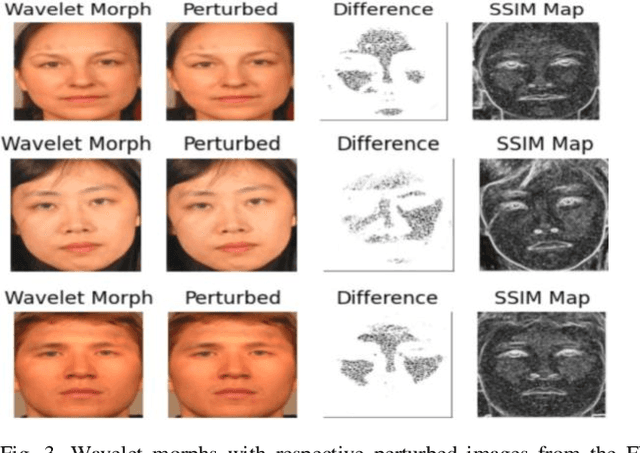Adversarially Perturbed Wavelet-based Morphed Face Generation
Paper and Code
Nov 03, 2021



Morphing is the process of combining two or more subjects in an image in order to create a new identity which contains features of both individuals. Morphed images can fool Facial Recognition Systems (FRS) into falsely accepting multiple people, leading to failures in national security. As morphed image synthesis becomes easier, it is vital to expand the research community's available data to help combat this dilemma. In this paper, we explore combination of two methods for morphed image generation, those of geometric transformation (warping and blending to create morphed images) and photometric perturbation. We leverage both methods to generate high-quality adversarially perturbed morphs from the FERET, FRGC, and FRLL datasets. The final images retain high similarity to both input subjects while resulting in minimal artifacts in the visual domain. Images are synthesized by fusing the wavelet sub-bands from the two look-alike subjects, and then adversarially perturbed to create highly convincing imagery to deceive both humans and deep morph detectors.
 Add to Chrome
Add to Chrome Add to Firefox
Add to Firefox Add to Edge
Add to Edge